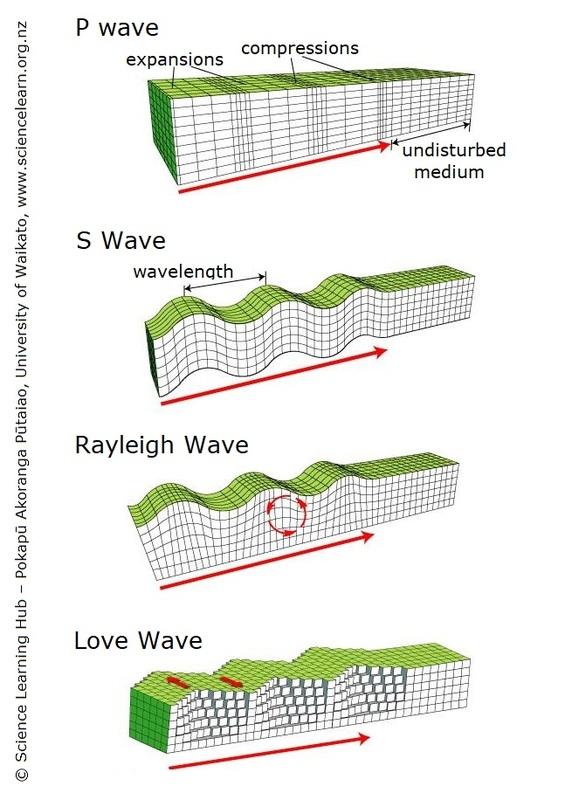Continental plates are constantly moving which leads to a series of natural occurrences. One of these occurrences is the earthquake, which results from sudden contractions along the fault lines. Therefore, these sudden contractions transfer from their epicenter in form of seismic waves. According to Brûlé et al. (2017), there are four basic seismic wave types that a seismograph may detect. They include P-waves, S-waves, Rayleigh waves, and Love waves. However, the distinctiveness of these ripples is based on their magnitude.
P-waves are of the greatest magnitude; thus, they are recorded first in the seismograph on the occurrence of an earthquake. However, P-waves compress and expand through their medium of traversing. They travel through the air, taking the form of sound waves of 330 meters per second (Vallée et al., 2017). S-waves also referred to as secondary waves, are traverse ripples that travel at an angle by either shearing or shaking. Here, particles through which the waves are traveling are perpendicular to the wave’s direction (Vallée et al., 2017). They record a lower magnitude in the seismograph than the primary ripples and are more dangerous compared to p-waves.
Surface waves come in two forms that are the Rayleigh and Love waves. They are surface waves since they originate and traverse close to the surface. Because of their magnitude, they record last in the seismograph (Brûlé et al., 2017). However, slower than secondary waves, surface ripples prove to be more destructive when they strike, for they have a higher amplitude. Rayleigh waves traverse as ripples resembling those formed on water pools. Love waves lead to horizontal shearing of the ground (Vallée et al., 2017). However, people claim to have observed Rayleigh and Love seismic waves in open spaces such as parking lots. The figure below shows the four types of waves discussed above.

References
Brûlé, S., Javelaud, E. H., Enoch, S., & Guenneau, S. (2017). Flat lens effect on seismic waves propagation in the subsoil. Scientific Reports, 7(1), 1-9.
Vallée, M., Ampuero, J. P., Juhel, K., Bernard, P., Montagner, J. P., & Barsuglia, M. (2017). Observations and modeling of the elastogravity signals preceding direct seismic waves. Science, 358(6367), 1164-1168.